How one shift in a reader’s book buying habits can change an author’s life - Delilah Waan
4 Feb 2025You’re scrolling through your feed during a break when a striking book cover catches your eye:
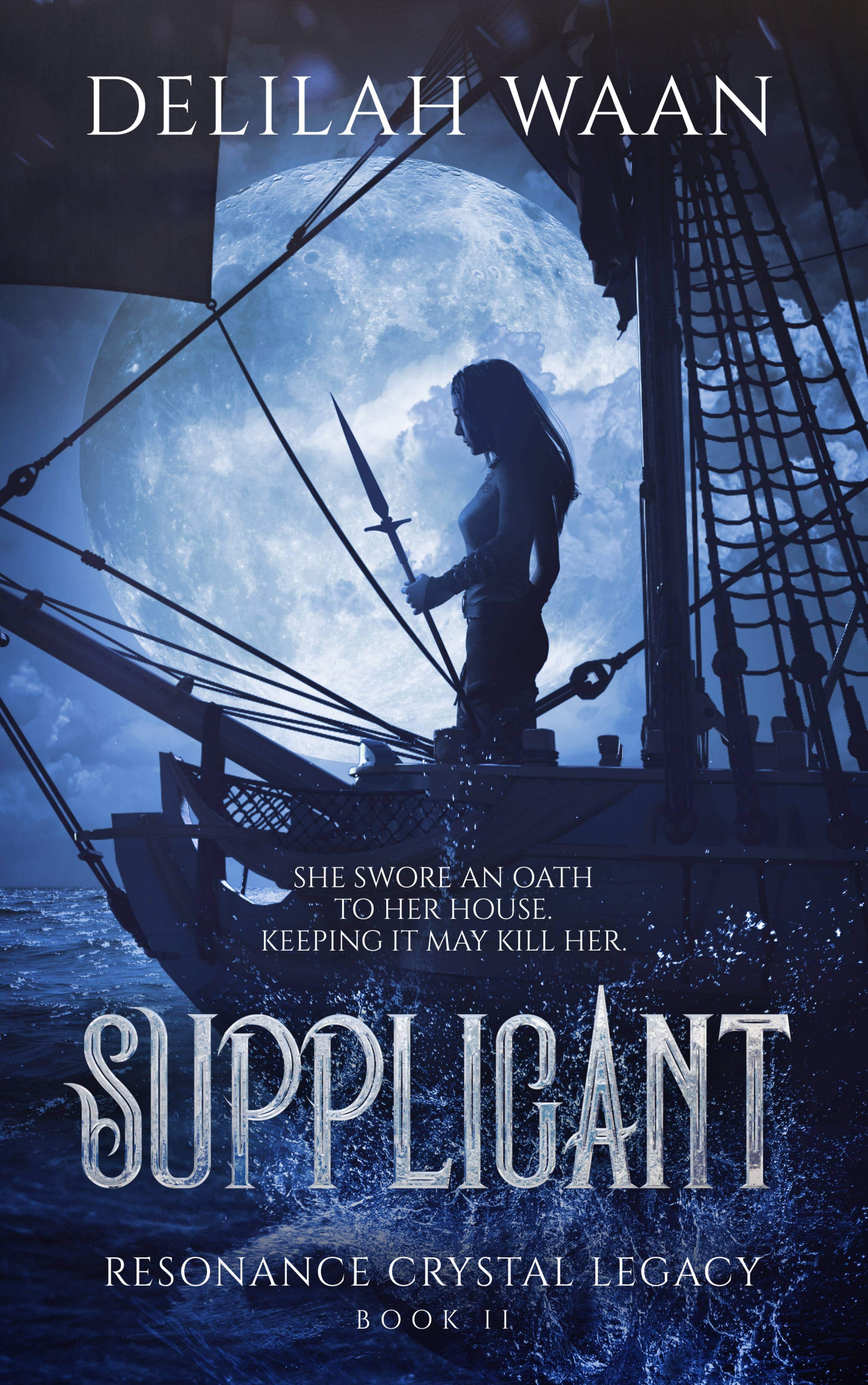
Ocean blue, with a spear-wielding girl, standing at the bow of a ship backlit by the moon. The blurb promises a deadly quest across the high seas for a legendary artifact, with plenty of political intrigue, betrayal, and emotional damage.
Oooooo, you think to yourself. An epic fantasy heist? I’m game!
But instead of clicking through to Amazon, you choose the button that says “Buy direct” and order the ebook bundle through the author’s website.
It’s almost midnight in Australia, though, so the author’s asleep when her phone screen lights up with the new email: New order #2093.
She doesn’t see it when she wakes up, either, because she’s gone straight to her desk. Forget her notifications, forget breakfast, forget everything except for sitting down at the keyboard because every precious minute before everybody else wakes up is a precious minute of being able to write, undisturbed.
Her stomach growls just as her writing timer winds down to 0:00:00. Her phone pings with another notification.
Square just sent you $—
Her breath catches at the sight of the triple digit payment that just landed in her bank account.
(She’s only ever cracked triple digit royalties twice before. Once when she published her debut, thanks to the kindness of friends and acquaintances turning out in support, and once when she participated in one of those giant $0.99 indie sales. By the end of it, she didn’t know whether to laugh or cry. An astounding 189 people had decided to give her book a shot—amazing—but she only received a paltry $0.35 per sale.
Amazon kept the rest. And then didn’t pay her for months, because of some glitch. It’s been a year and she’s got a hunch that Amazon hasn’t paid her all the royalties from that sale; she was still getting royalties from 2022 sales in 2024, because it took that long for her to sell enough books in those regions to meet Amazon’s payment thresholds.)
Frantic scrolling through her inbox turns up four new orders. Four new orders!
One audiobook sale; two ebook sales, one of which is for the series bundle; and—oh my god—someone actually preordered a signed hardcover. There’s a little note attached asking, “Will you be selling the miniature replica spears separately at the book fair next weekend?”
Hell, yes, she thinks, then writes back, a little more professionally: “Of course! I’ll set one aside for you.”
This week, she can pay for groceries with money earned from her books instead of putting the bill on her credit card.
Next weekend, at the book fair:
Hundreds of people walk by her stall. Fifty or so complete strangers stop to chat. They all know she’s self-published but none of them balk at her prices—$40 AUD for a hardcover; $25 AUD for a paperback.
Twenty of them end up buying. Several spring for map prints and merch on top of the books. Days later, a few readers who walked away with bookmarks place orders through her website.
The occasional Square notification on her phone turns into a regular trickle. Everything changes. Now she knows there are readers out there, willing to forego the easy convenience of buying through Amazon with subsidized next-day free shipping via Amazon Prime, to support her directly.
Suddenly, she’s the one winding up with the lion’s share of the revenues.
Suddenly, breaking even on her publishing costs becomes a matter of finding two hundred readers, instead of two thousand.
Suddenly, it doesn’t seem so crazy to be spending years of her life writing words and sinking—no; investing—so much of her savings into publishing books.
Not when over a hundred people have pledged to back her on Kickstarter.
Goodbye to enriching some soulless megacorporation’s bottom line by trying to outbid other indie authors on keywords by pouring all her royalties and more into spamming people with ads in their Facebook feed, ads in their Amazon search results, and more ads on the product pages of comparable books, in a desperate attempt to find her readers.
Hello to teaming up with her fellow indie authors to cheer each other on and celebrate as their Kickstarter campaigns launch and fund.
Hello to hiring brilliant human artists and narrators and paying them what their labor is worth with the Kickstarter proceeds.
Hello to DRM-free ebook files that her readers own outright—ones they can download as many times as they want to read on whatever device they want without their library being locked into one ecosystem and held hostage by a single retailer.
Hello to gorgeous special editions with exclusive art and foil stamped faux leather covers and gilded edges and book boxes and other awesome perks for superfans.
Hello to partnering with indie-owned businesses and bookshops to get books shipped to readers all over the world.
Hello to fifteen thousand seven hundred and ninety-nine reasons to get up before sunrise and write today, tomorrow, and all the days after. Even though right now she feels like every sentence she’s putting down on the page is the worst sentence that any person, living or dead, has ever produced, and her brain can’t stop screaming at her about how the most responsible, rational thing to do is to call it quits instead of wasting all this effort on chasing a deluded pipe dream.
You’re never going to be as big as Brandon Sanderson. You can’t pull the size of audience that Will Wight or Ryan Cahill can. Stop holding out for a BookTok miracle; your books are never going to go viral because you couldn’t write to a trending trope if your life depended on it.
But she was an accountant and an auditor before she was an author and she’s run the numbers.
She doesn’t need to be a bestselling author on Amazon or anywhere else to make a viable living out of writing and publishing books; she just needs to find enough readers willing to make the switch to buying her books direct.
When Jamedi invited me to write a guest post about why getting books directly from the author benefits everybody, I jumped at the chance.
Publishing is famous for being an opaque industry. From publishers to distributors to retailers, most folks are very tight-lipped about numbers. The ones that do get publicized tend to be sound bites meant to drum up interest in the book: the size of the author’s advance (for traditional publishing book deals) or some milestone, like “over a million copies sold!”
Though there’s a handful of traditionally published authors willing to chat money, and many more indies who regularly make financial transparency disclosures, the complicated ins and outs of publishing and the variables involved makes the big picture nearly impossible to understand for anyone who’s not already in publishing.
By and large, most of the publicly available examples also focus on top line numbers—gross revenues—without discussing things like marketing spend and other expenses. “How I Made $100,000 Selling Books” makes for a great headline that gets clicks.
The reality of having to spend thousands on ads per month to eke out mere hundreds of dollars in profit? Not so much.
Also, some book retailers and distribution platforms gag you with non-disclosure clauses, so nobody can discuss the grossly unfair royalty split that favors corporations over the authors and artists.
With all that in mind, here’s some rough numbers on how much an author gets paid, depending on where a reader chooses to get their books from:
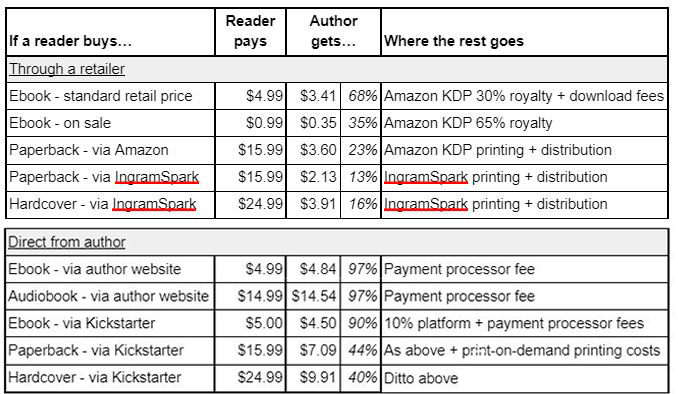
The above assumes print-on-demand unit pricing for a physical book with a page count in the 350-450 range, and that shipping is charged separately. Margins will also vary depending on each individual author’s publishing supply chain.
As a general rule of thumb, however, here’s a rough overview of how the revenue/royalty split works for some of the most common scenarios:
- Direct sales (author website) - author keeps ~97% and Square takes ~3% for payment processing
- Direct sales (Kickstarter) - author keeps ~90% and Kickstarter takes ~5% for platform fees and Stripe takes ~5% for payment processing
- Amazon ebook at full price (i.e. above $2.99 USD) - author keeps 70% less download fees and Amazon takes ~30% + download fee
- Amazon ebook discounted below $2.99 USD - author keeps ~35% (less download fees in some markets) and Amazon takes 65% (+ download fees in some markets)
- Google Play ebook sale at any price in most countries - author keeps 70% and Google takes 30%
- Kobo ebook sale at full price (i.e. above $2.99 USD) - author keeps 70% and Kobo takes 30%
- Kobo ebook discounted below $2.99 USD - author keeps 45% and Kobo takes 55%
- A full read in Amazon Kindle Unlimited - Amazon calculates the total value of a page read and multiplies that by the Kindle Edition Normalized Page Count. Authors have no idea how Amazon comes up with either of these numbers. One page read, as of the writing of this article, is worth around $0.004–$0.005 USD. (Written Word Media keeps an up-to-date list of current and historical Kindle Direct Publishing global payout rates.)
- A full read in Kobo Plus - Kobo calculates the total value of a per minute read and splits that with the author 60/40 in the author’s favor
- Requesting your local library to buy a copy of an ebook via OverDrive - author gets paid 55% of the library price which is about 3x the normal retail price but the distributor will take ~10-15% for their cut so the author ends up with ~45%—about double what they would get for a normal ebook sale
- Requesting your local library get a copy via Hoopla - author gets paid per borrow, which is about 1/3rd of the retail price, which ends up being a little less than 40% after the distributor's cut
- Every other retailer - some variation of the above
Authors who have the capital and a sufficiently large readership will be able to leverage economies of scale in producing an offset print run of their books. Depending on the length and complexity of the book, per unit pricing of offset print runs usually drops to comparable levels as print-on-demand per unit pricing from around 200 or 300 books, with the additional benefits of better quality control and the ability to add specialty finishes like spot UV, embossing, debossing, foil stamping, and edge designs.
Audiobook lovers, you’ll notice I’ve omitted a detailed discussion of audiobooks, particularly through an Audible subscription. Thing is, audiobook sales get really complicated due to the convoluted ways in which Amazon/Audible handles pricing and credits and a bunch of other factors. If you’re interested in the details, you can check out my thread over on Bluesky which dives into more detail and explains exactly how authors get paid for audiobooks made available on Audible.
The short version: authors who make their audiobooks available through Audible on a non-exclusive basis—because we want our books to be accessible to readers everywhere, including via libraries—get a pittance. (Authors who make their audiobooks exclusive to Audible get a bit more than a pittance.) If, like me, they are based anywhere other than the US, UK, Canada, or Ireland, they have to give up a chunk of that pittance to an audiobook distributor.
In such a scenario, if a reader bought my audiobook at $14.99 USD through Audible, I would get approximately $1.31 (~8%) while Amazon/Audible keeps the rest.
Wild, isn’t it?
Anyway. Readers often ask me, “What’s the best way to support you as an indie author?”
I always answer with, “Tell other readers about my books.”
At the end of the day, books are a volume business so the more people who know about my books, the higher the chance that my stories will find their audience, and the more likely it is that I’ll be able to keep on writing and publishing books. Books and author careers live and die by word of mouth from readers.
For those who want to do something that’s more immediate and tangible, though, consider shifting from buying through retailers to buying direct.
I know it sounds cliché, but I want you to know that your choices do matter. It doesn't feel like you're making a difference when you decide to buy a book direct from an author, through their website or Kickstarter, instead of elsewhere, but it does.
Truly, it does.
Because it's a whole lot of people all making small choices like that who make the impossible possible.
When I first published my debut novel, Petition, I had no idea if there was an audience for that kind of story. It's been nearly three years, and I still don't know that there's a big audience for the kind of stories I'm telling.
In coming up with the above fictionalized account of my experience in trying to “make it” as a self-published author, I took a few artistic liberties with some details and played a bit loose with the timeline of events. For example, I’ve never had a single day of triple-digit sales through my webstore, but there’s been the occasional run of several days of sales that came to a triple-digit total for the week.
From an author’s perspective, it all adds up.
It took 15 months for Petition to reach the milestone of $500 AUD in sales. Thanks to the generous support of readers, the Kickstarter campaign for the sequel, Supplicant, smashed through that same milestone in 9 minutes and ended up funding at $15,799 AUD.
On 18 November 2024, I really did login to my internet banking app and was greeted with the sight of a $13,744.13 AUD credit hitting my savings account. A big chunk of it went straight back out to pay my artists and narrator. The rest of it will follow soon, to pay for a limited print run of special editions.
That might make it seem like nothing has really changed.
But there's a world of difference between me paying thousands of dollars to Amazon and Facebook so they can annoy you with my ads, and me paying thousands of dollars to human artists.
Like Emily Woo Zeller, who brought my characters to life and added another dimension to my story with her heart-wrenching performance: https://www.youtube.com/watch?v=YBZVlYcsN04
Like Rosemary Fung and K.E. Rosero and Charis Loke, who created amazing pieces of art that make the books better:
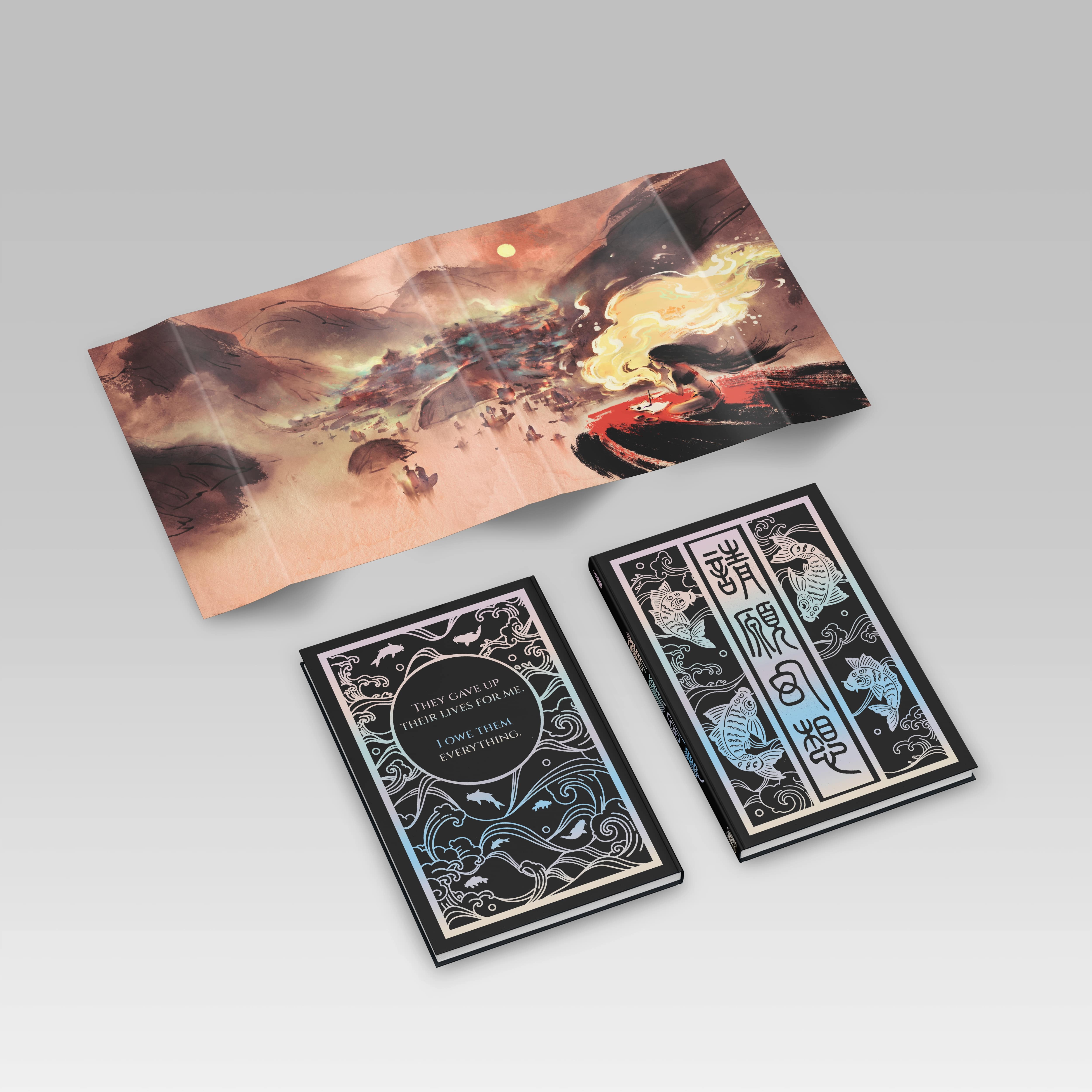
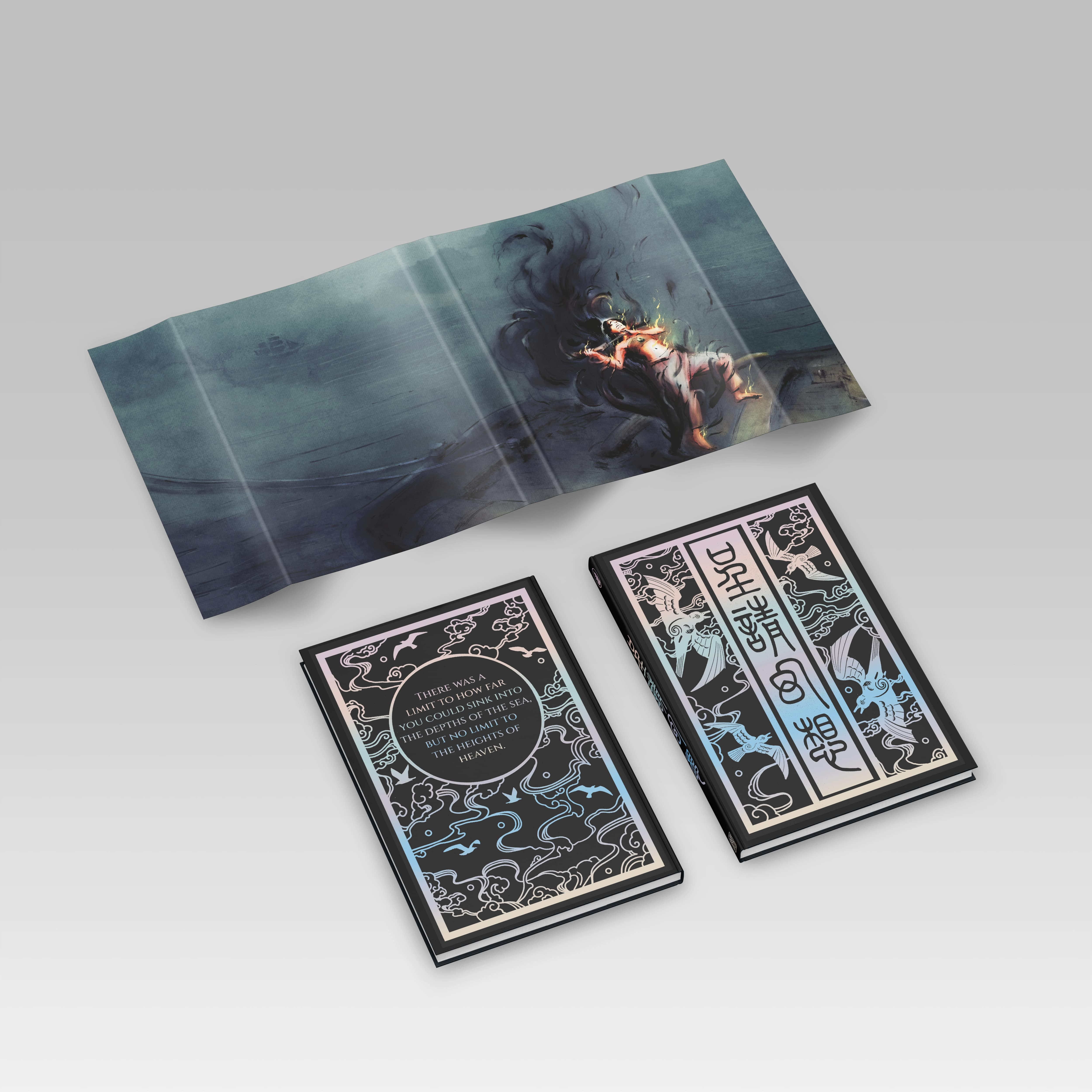
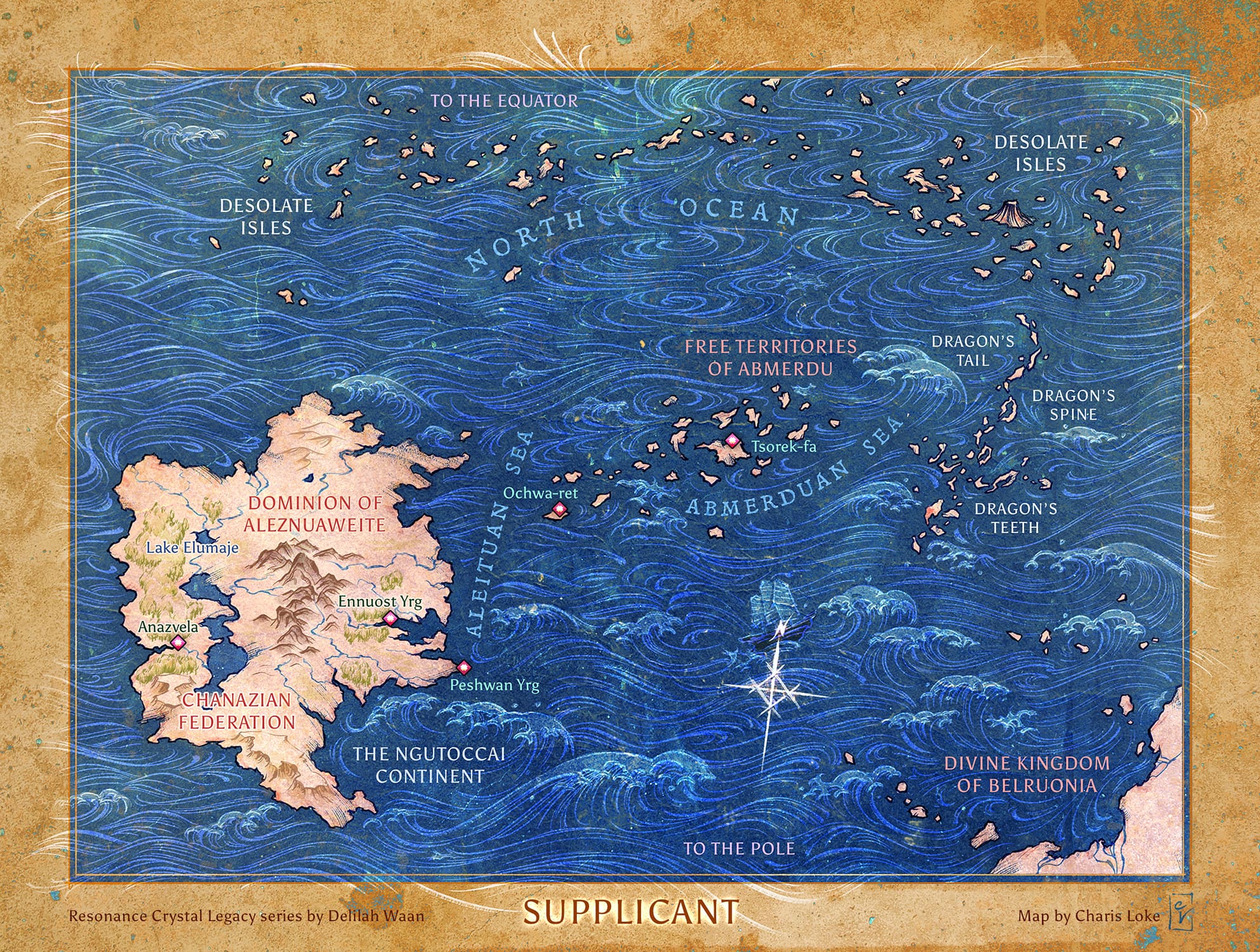
I reckon the world could do with more art and less ads, don't you?
About Delilah Waan
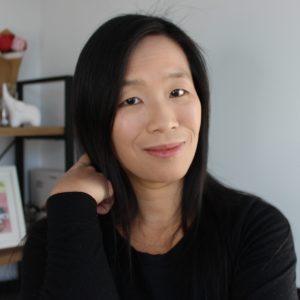
Delilah is a Chinese-Australian author who writes raw, emotional adult epic fantasy where there are no villains—just complex characters with strong motivations who are at cross-purposes.
The Resonance Crystal Legacy is her adult epic fantasy series about love, debt, ambition, and family. It takes place in an East Asian-inspired setting where emotions give you power, and reexamines classic epic fantasy tropes through the lens of an immigrant perspective.
The first book, Petition, is about Rahelu, an angry daughter of impoverished fisherfolk fighting privileged rich kids in a ruthless job hunt tournament. Petition won the 2023 Indie Ink Award for Best Asian Representation by an Asian Author and was the runner-up to the Before We Go Blog finalist pick for the 2023 Self-Published Fantasy Blog-Off contest.
The second book, Supplicant, is about how far Rahelu will go to live up to the weight of her family's expectations. It's an epic fantasy heist with world-changing stakes, diverse perspectives, and complex characters struggling with difficult choices that culminate in hard-hitting emotional moments.
Delilah’s books are available for purchase direct from her website and through most retailers, and can also be requested via your local library in ebook, audiobook, and print. For more details and sample chapters, visit her website: www.delilahwaan.com
